The content of the article
By polyxena is meant a medium-sized butterfly, which in wingspan grows to a maximum of 5.5 cm. It is pigmented with a light yellowish tinge and stands out among itself. Individuals of this breed group prefer to dwell near damp ravines, as well as on the edge of a forest and in river valleys. They need high humidity for a comfortable life. When the caterpillar pupates, it endures winter. As for the flight, it begins in the middle of the spring, and continues until the end of the season.
Features of the form
- The wings have complex patterned patches consisting of reddish and black pigments on a yellowish background. Butterflies can be beige. On the outer parts of the wings there are curved bands. On the lower side there is a red and black strip, and a black-yellow outline emerges from above.
- Many inhabitants of such a family live in the Crimea.They love the terrain in front of the mountains, as well as meadows and bushes near water sources. Attract individuals beams, paved with grass. Some lepidoptera inhabit vineyards. The flight begins in the middle of spring, ends with the end of the season or the beginning of the summer season.
- These creatures are slow, flying measuredly, near grassy areas or shrub zones. Sit down on the foliage and twigs, may be in inflorescences. Habitat is partial, for living requires kirkazon, they feed on caterpillars. This species of Lepidoptera is not numerous.
- The species is listed in the Red Book of Ukraine. Human activity is negatively reflected in the population. Habitat is increasingly being developed by humans, individuals are forced to literally survive without vegetation, in dry grass and foliage, among uprooted trees. The whole place is occupied by new buildings and other land.
- At the caterpillar stage, the hull is pigmented not too brightly, the color is close to beige. Orange blotches on the cone format adorn the general background. Such a bright color makes it clear to predators that these caterpillars are not fit for human consumption.
- The caterpillar feeding is not diverse, they lean on the Kirkazon, therefore in the late spring or early autumn they are found sitting on these inflorescences. When development ends, the caterpillars descend to the ground, pupation begins, for this purpose a secluded corner is chosen. Wintering can last twice.
Description
- The wingspan of the individuals can reach 5 cm. In males, and in females up to 5.5 cm. It is worth noting that the representatives of the weaker sex are slightly larger. In any case, the insects wings painted yellow.
- On them you can see red blotches and black stripes. The size of the spots may in some cases be different. Butterflies live no more than one year. Offspring they bring from early April to mid-May.
- In addition, the breeding season may vary depending on the climatic conditions in which these insects live. Being in the state of pupae, females are born a week later than the opposite sex.
- Family members are located in France and other parts of Europe. They live in Turkey, in the expanses of our country. They can climb 1 km.in height from sea level. Tendency to seasonal flights is present.
Breeding
- It all starts with the laying of 1 egg on the reverse side of the leaves of the forage plant. Most often this occurs in late spring. In the role of fodder plants acts kirkazona ordinary, pale and rounded. The egg has the shape of a sphere. It is painted in white and pearl color. This stage lasts only a few days.
- As soon as a caterpillar emerges, it begins to lead a rather interesting way of life. It feeds on a limited plant species. Such caterpillars prefer only the plants of the species kirkazon. The larva has a black color.
- Over time, it changes color to violet-orange. Also on the body you can see bright orange warts, on which there is a black dot in the center. Active in sunny weather. At this time they have a full meal flare up.
- A few days before pupation, such caterpillars stop feeding at all. They are looking for a suitable twig. The caterpillar braids itself with a special belt. It hangs in this state for up to 3 weeks. If on the eve of the cold, the pupa winters in this state.After the butterfly appears.
Presented butterflies have a unique appearance. Such insects in the real world have become rare. If scientists can do nothing, butterflies will disappear altogether. Remember that individuals are listed in the Red Book.
Video: polyxena butterfly (Zerynthia polyxena)

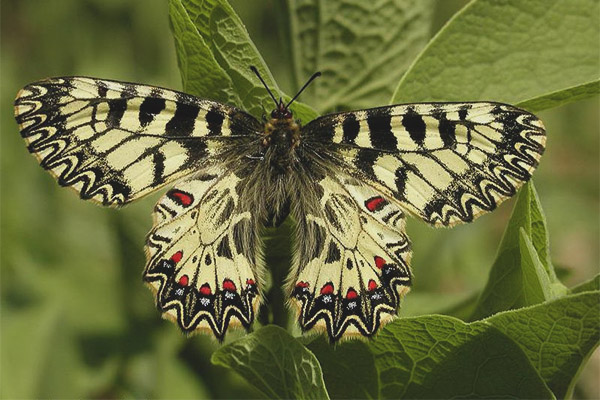


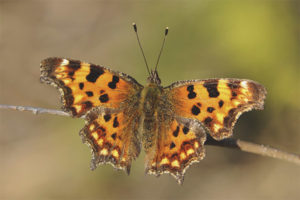
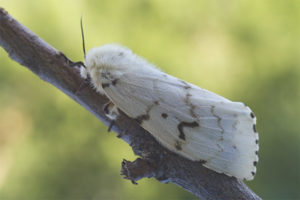
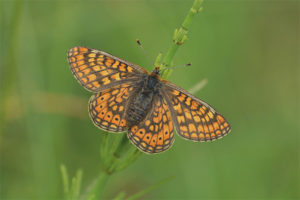

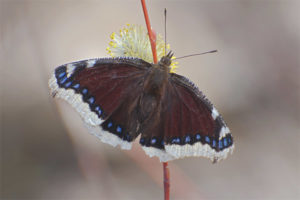
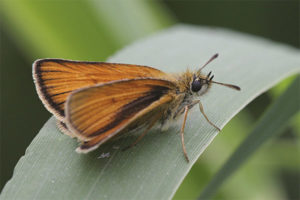


To send